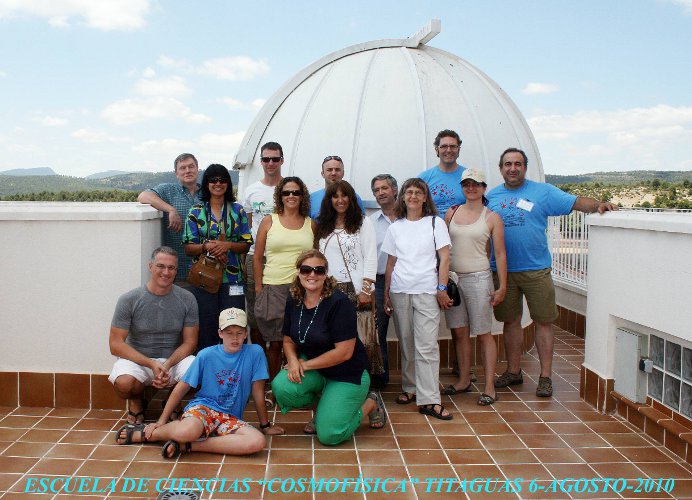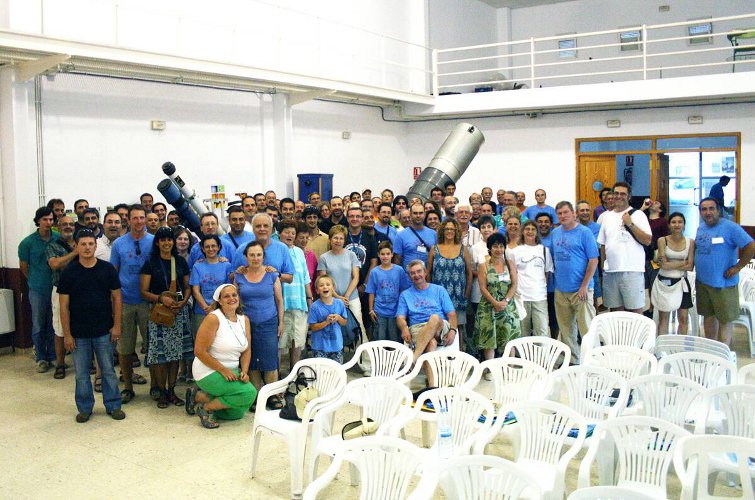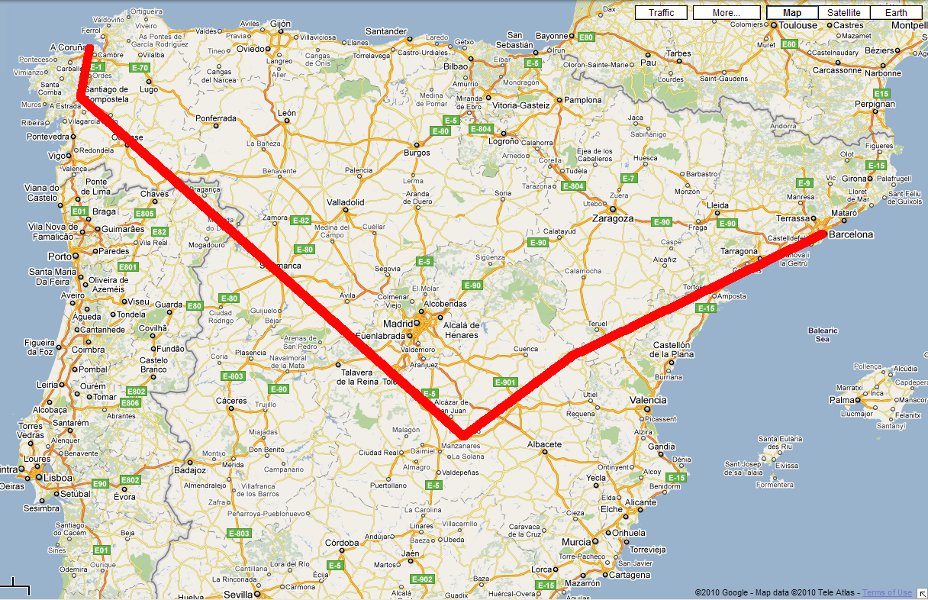Visiting Spain gave Barbara and I a chance to see friends, travel in Spain, and present at RETA, the annual telescope makers conference and star party.
Debbie and Berthold acted as our hosts, giving us a tour of Spain. They are both gifted and accomplished musicians, playing in the Orquesta Sinfónica de Galicia, based in La Coruna and one of the best orchestras in Europe. They also perform and record in their own group, the Artemis Ensemble. Bethold is also a leading ATM (amateur telescope maker). Debbie is sitting with Simba and Leia. Berthold and Mel enjoy coffee. Berthold designed and built the house; Debbie painted the pictures.
Berthold’s roll-off roof observatory.
The famous Roman era lighthouse, the Tower of Hercules, is the oldest Roman lighthouse still in use. Barbara, Debbie and Berthold enjoy a bit of wind at the top of the lighthouse.
This year happens to be a Holy Year, so the pilgrimage, the Way of St James, culminating at Santiago de Compostela, was particularly packed. The statues, created as jokes or revenge, once directed water away from the buildings.
The entrance to the altar side of the church is also quite elaborate. We waited in line and eventually wound our way to the crypt of St James, deep below the altar.
Processions occurred every so often. Those are bagpipes. There's a long history of Celtic culture in this part of Spain.
We travelled onto Salamanca. The central plaza is one of the most impressive in Spain. People come out to hear speeches given from the balcony.
The big cathedral in Salamanca featured prominent flying buttresses.
The symmetry and beauty inside is quite striking.
We stayed overnight in a farm converted to a hotel that was next to unending fields of Sunflowers.
Then it was onto Segovia. By the way, did I mention that it's quite hot in central Spain in the summer? Temperatures hovered near 100F.
We visited Segovia’s Fairy Tale Castle, the Alcazar.
Segovia from Alcazar looks quite picturesque.
In Segovia is a famous Roman Aqueduct, which reaches 200 feet in height.
Staying overnight in Madrid at Oscar's house, we visited the observatories at La Hita.
Then we travelled onto Toledo in the morning. Toledo is in Man of La Mancha territory, with its famous windmills.
After traveling across much of Spain, we now arrive in Aras de los Olmos.
Nearby in Titaguas is the best astronomy education center I’ve seen – three stories of classrooms, bunk rooms, teacher quarters, planetarium, topped with an observatory and observing deck with a number of telescopes. Students can stay for the day or for the week - most impressive. The force behind the project is the 4th woman from the left, standing next to Barb. RETA's organizer is on the far right.

While staying at the astronomy conference, the Ava Maria procession came to Aras de los Olmos.
Sheep have the right of way in Spain.
The hotel where we stayed during the conference featured a beautiful wood interior and rooms. Several rows of wooden cabins sit in the back, out of the image, to the left.
I gave two presentations, "Natural Design of Telescopes" and "Grinding F/3 Mirrors". Despite my giving the presentations in English and my slides in English, the conference attendees were very gracious and appreciative. Barbara and I are in the front row, right of center.

The area is peppered with observatories on the ridges. Here's one of the observatories in a complex of domes holding a PlaneWave instrument. There's a great deal of alternative energy in Spain including windmills and solar cells.
Looking back at the town from one of the observatories.
The telescopes were most interesting. Here’s the largest ball scope I’ve seen, an 18 incher.
And an ultra light fiberglass 18 inch.
Corpuscular rays at sunset.
Before departing town, we visited a museum where they showed historical beekeeping, along with a beekeeper. The press that was used to squeeze products including beeswax along with wine was massive.
An ancient beehive where bees were kept for their honey. The comb was extracted along with the honey each year.
This type of cork hive is still in use. The bees are going down into the frames.
Note the twist on the Spanish hive tool, called a Jakel.
Stacked hives, basically brood boxes, sit in storage. The local beekeeper runs about 600 hives. He does (actually his wife) all the bottling by hand. We estimated about 2000 gallons of honey were produced, this being a bad year because of the wet spring (same as here in the Pacific Northwest).
The boxes are filled with an interesting two part frame. That's the local beekeeper who runs the operation along with his wife and brother.
After all this, it was onto Barcelona and our flight back home. Thanks to our hosts, Debbie and Berthold, Barbara and I had a wonderful time and saw a great deal of Spain.

eod